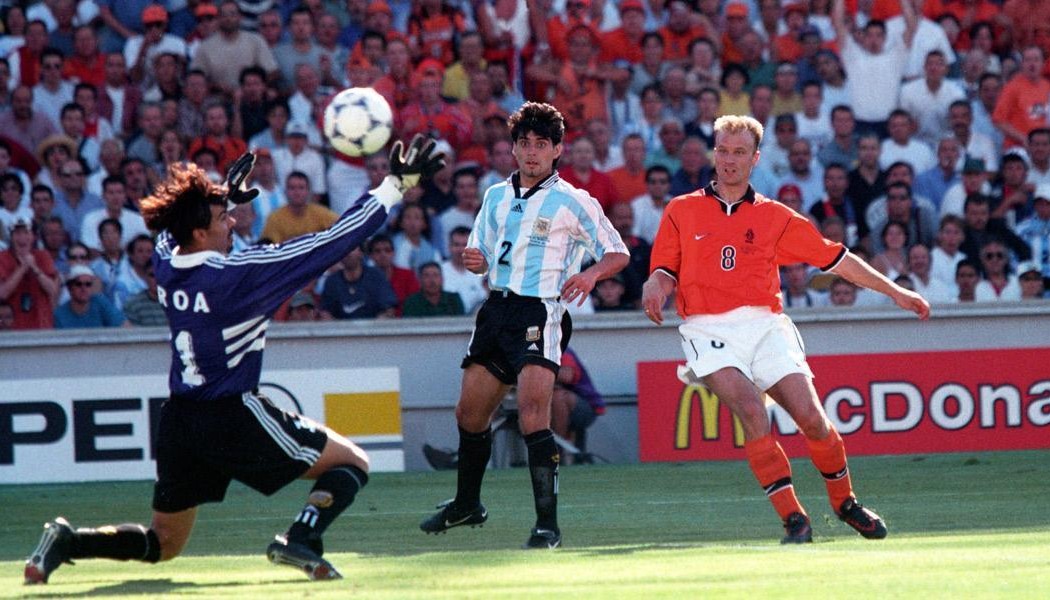When is an assist, not really an assist?
Today’s increasing obsession with football statistics has caused some concern with the sport’s traditionalists and purists who argue what makes the game great is its ability to produce the intangible; moments which cannot be simply defined and categorised. These moments have helped make the game o jogo bonito.
The arguments both for and against the seeking of scientific algorithms and number crunching within the beautiful game was fascinatingly debated a few months back by Michael Moruzzi and Sanjit Atwal.
As the battle between science and magic rages, the fantasista has long been the embodiment of such a debate. An artist in an athletic world, the contradiction in a team sport; a paradox. Goalkeepers save, defenders tackle, wingers dribble and cross, and strikers score; those expectations are all measurable of players in those positions. The playmaker’s paradox? The only thing expected is the unexpected. Charged with creating and scoring (measurable) for his team but through intangible methods. And how do you measure the intangible?
Take the statistic of the assist, the primary creative function of a playmaker. If there is something which helps register and acknowledges this artful element of the game whilst recognising the player responsible, then we’re all for it. However, this measurement is probably the most hotly debated category when it comes to collecting data from a match, due to no set definition in the laws of the game – although the most widely accepted is the following:
‘The final pass/cross which directly leads to a goal scored by the recipient of the ball’.
Using this definition, the last player to pass to somebody who scores a goal would be credited with an assist when collecting the stat. Simple? In its basic form, yes. Fair?…
Does a player really deserve an assist, using the above definition, for goals seemingly created out of nothing by the goalscorer themselves? When a pass was intended as just that: a pass, but the receiving player then produces the unexpected?
Producing the unexpected is the realm of the fantasisti, with creating goals top of their agenda. Across the board, almost all playmakers tend to insist that they gain just as much joy from creating a goal than scoring one themselves – if not more so. Some, are extremely capable in both departments. Take Lionel Messi for instance, or the great Brazilian Zico who gave the perfect analogy of his game when stating:
Being the arrow and the bow came naturally to me.
Zico was of course describing himself as a creator for others, as well as being able to finish himself; however what happens when this amalgamates into one – when a playmaker in question does both in the same passage of play – concluding in a goal?
Countless demonstrations have been given whereby number 10s have scored goals so magical – created by themselves with an improvised touch or ingenious piece of play- that they deserve the ‘assist’, as well as the goal they scored.
Of course, it isn’t just playmakers who have scored great goals where another player would benefit from a credited assist. Think any amazingly struck shot or volley (like Marco van Basten in Euro 88 or Wayne Rooney’s overhead kick in the Manchester derby) were an assist would be credited to a team-mate making the sideways pass or cross, made more in speculative hope, than pure creation. But that is a debate for another website, perhaps.
Here, we’re championing the creative genius’ who have the natural instinct to create for others consistently, but, at a specific moment in time, have produced the unexpected and added the creative element to a goal which they themselves have scored. Taking one (or more) magical touch(es) – the assist – before applying the finish.
As Rob Smyth superbly put it in his excellent piece describing Dennis Bergkamp’s wonder-goal for Holland in the 1998 World Cup against Argentina:
Bergkamp is unusual in that most of his great goals – Argentina, Leicester, Newcastle, Spurs – are remembered more for the first touch than the finish. He loved making goals, and it’s almost as if that was his way of supplying an assist for himself. If you wanted to go the full pseud, you could call it a pre-goal.
Think Roberto Baggio when he produced his magical one-touch control and rounding of the keeper in a single movement, whilst scoring for Brescia against Juventus. This touch is worthy of the assist, not the long ball played to him (despite the many plaudits a young Andrea Pirlo received for making such a pass). Sure, the first phase of play (long ball) could be (and is, officially) deemed as the assist, however Baggio’s touch (second phase) was such that it was akin to the final pass – an assist – leaving himself with the task of rolling the ball into the unguarded net.
Those who have played Pro Evolution Soccer (the old, good versions) long enough will know the feeling of scoring a goal by playing a [TRIANGLE] through-ball to a team-mate as the opposing ‘keeper rushes out, leaving an open goal gaping for your gleeful partner to score. This, was the real-life equivalent, with an extra dimension- but with only one player involved.
What about goals scored after a mesmeric run: the classic individual goal? Baggio, again, is another point of reference here, scoring a number of fantastic goals in this manner – gliding past opponents with elegance and grace before applying a finish. Does Guiseppe Giannini, himself an accomplished number 10, deserve the assist which would today be credited to him as the man who last passed the ball to the Divine Ponytail before he waltzed through the Czech defence in Italia ’90?
The same tournament saw Lothar Matthaus score in similar circumstances, ultimately competing with Baggio for Goal of the Tournament; although the German’s thunderous finish came after a powerfully rampaging gallop once receiving a pass inside his own half from Jürgen Kohler, which was in direct contrast to the Italian’s graceful run and finish.
Of course, the ultimate individual goal was scored in the same tournament, only four years earlier when Diego Maradona wowed the world. Would anybody dare suggest that Argentina’s number 10 did not create that goal after dribbling round half of the England team in 1986? Would today’s obsession with specific stat collection dictate that Hector Enrique claim the assist?
To this end, the simplistic view and above definition of the assist starts to get complicated. People, leagues and even whole countries hold differing views on what should constitute an assist. Those in Spain argue that if a pass is made on the halfway line and a player dribbles the length of the pitch (as in the above examples), how does it constitute an intentional attempt to set up a goal?
Opta, ‘the world’s leading sports data company’ who have collated Premier League stats since 1996 acknowledge this in part, logging the assist for the ‘passer’, but: ‘also logs a qualifier “Intentional” which is applied when the pass is clearly intended to put the scorer in a goal-scoring position’.
At least Opta tip their hats in acknowledgment then; though why a player should still be credited for creating a goal when clearly no intent was there is one we would not agree with, directly opposing what a fantasista stands for – intentional creative genius.
So, if we must persist with this modern craze of stats gathering and analysis, isn’t it time to start giving credit where credit’s due?
As with numbers, words simply cannot do real justice to genuine beauty. To see further perfect examples, we’ve selected five magical goals, both created and scored by the same playmaker, for you to view.








1 Comment